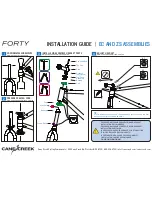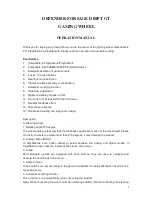
EKINOX Series
– Hardware Manual
EKINOXV3HM.1.2
4.5. GPS antenna connectors
To connect external GPS antennas, the Ekinox-D versions feature two TNC connectors that provide IP-68
protection even unmated. The internal GNSS receiver only supports active GPS antennas.
Any standard coax cable with a TNC male connector can be used with the Ekinox. However, care should be
taken to select a high quality coaxial cable with low loss in case of long cable.
Please be advise that the Ekinox doesn't implement any lightning protection. The GPS antenna and cable
are very sensitive to strikes and a proper installation with lightning protection devices may be required.
Note: For best performance, the antenna(s) should be connected before the power is applied. The
Ekinox GPS estimates the noise floor of the antenna during the startup sequence.
Warning: With the Ekinox-D, for correct dual antenna operations, please use the exact same TNC
cables and antennas for the primary and secondary GPS.
4.5.1. Electrical specifications
Parameter
Specifications
Remarks
LNA supply voltage
5 VDC
±5%
LNA supply current
< 100 mA
Note: If you use an amplified antenna splitter or special GNSS antennas such as a Trimble Zephyr 2,
please make sure that the actual gain at the Ekinox side isn't above 50 dB.
4.5.2. GPS antenna advice
The Ekinox-D embeds a high performance GNSS receiver that supports GPS L1/L2, GLONASS L1/L2, BEIDOU
B1/B2 and GALILEO E1/E5b signals.
For optimal performance, SBG Systems recommends the use of a multi-constellation GNSS antenna. In
addition, a dual frequency (L1/L2) tracking is mandatory for Ekinox-D dual antenna heading operation. Don't
forget to also check the GPS antenna LNA power requirements such as input voltage (must accepts 5 VDC)
and input current (must be below 70 mA).
SBG Systems has selected some high quality GPS antennas for different applications. Please refer to the
section 7.4.9 to get more details on available antennas.
Note: As a rule of thumb, true heading and/or RTK measurements require high quality GNSS
antennas to achieve the stated accuracy.
26/46
Figure 4.9: Typical TNC antenna cable
Figure 4.10: GPS antenna connector
















































